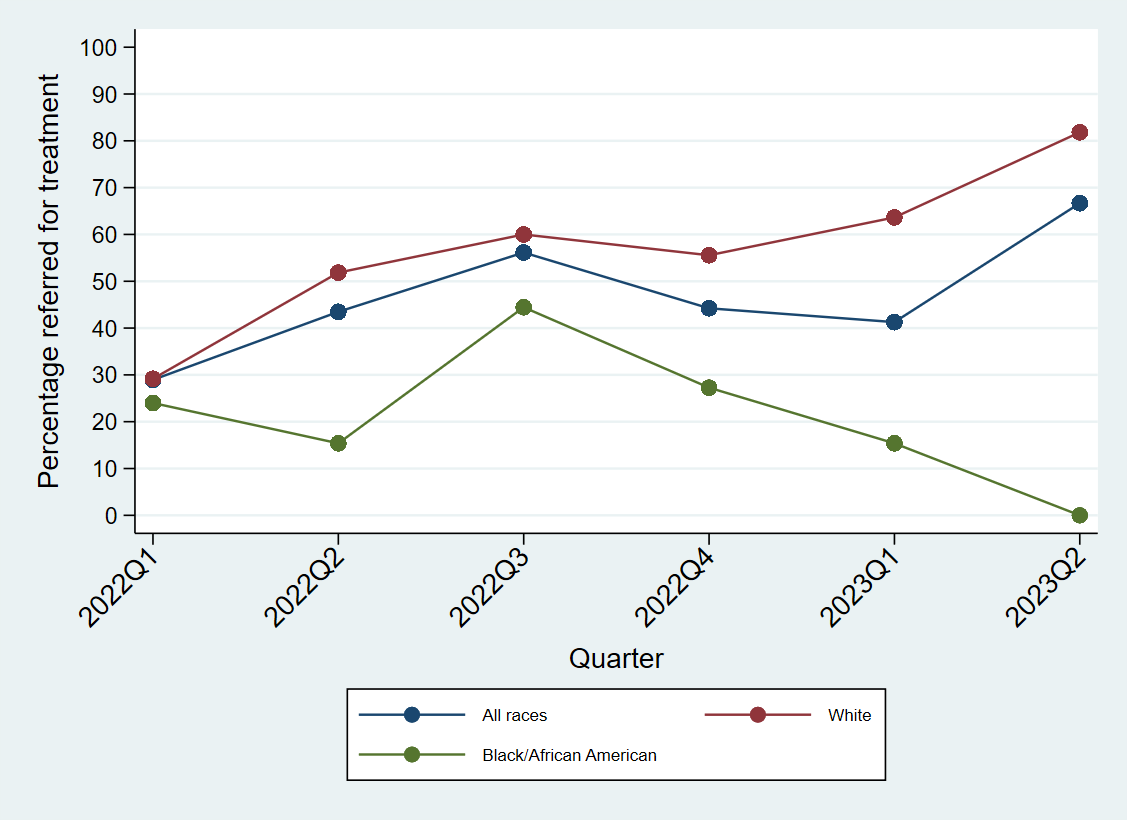
This is the first PQCNC project to incorporate inpatient and outpatient care teams. We started this project knowing that with maternal opioid use disorder, both maternal and child health outcomes improve when we approach care as a mother-baby dyad. To quote Matt Grossman, “Mom is the best Medicine”. We as PQCNC teams have focused on standardizing the use of evidence based tools to screen for substance use, encouraged the adoption of Eat Sleep and Console for postpartum and pediatric teams, and we have all continued to share the evidence that access to treatment (including medications!) improves outcomes for the mother-baby dyad health during pregnancy and through 12months postpartum.
However, not everyone in our state is benefiting from these changes. Pregnant and postpartum people of color are not receiving the same benefits. On the national level, though Black Americans experience substance use disorders at the same prevalence rate as non-Hispanic Whites, they continue to have disproportionate barriers to accessing treatment (National Survey on Drug Use and Health, 2021).
That deserves repeating, though non-Hispanic Whites and Black Americans experience the same amount of substance use disorders, Black Americans have less access to treatment. When we look at our state level, we see the same trends. An evaluation of access to medications for Opioid Use Disorder showed that pregnant people of color (non-White) had significantly lower rates of MOUD utilization than White pregnant individuals (Tak et al, 2022).
Why? There are likely multiple reasons this disparity persists. Racism, access, and lack of trust in accepting a referral are well described factors. The “why” of cLOUDi is the “why” of all PQCNC work. The mother-baby dyad is paramount in all initiatives. So as we approach this final push in cLOUDi, the question for teams to consider are the following:
1. Are we aware of racial disparities in our referral rates of mothers for Opioid Use Disorder?
2. If present, how can we address our dispairities locally?


